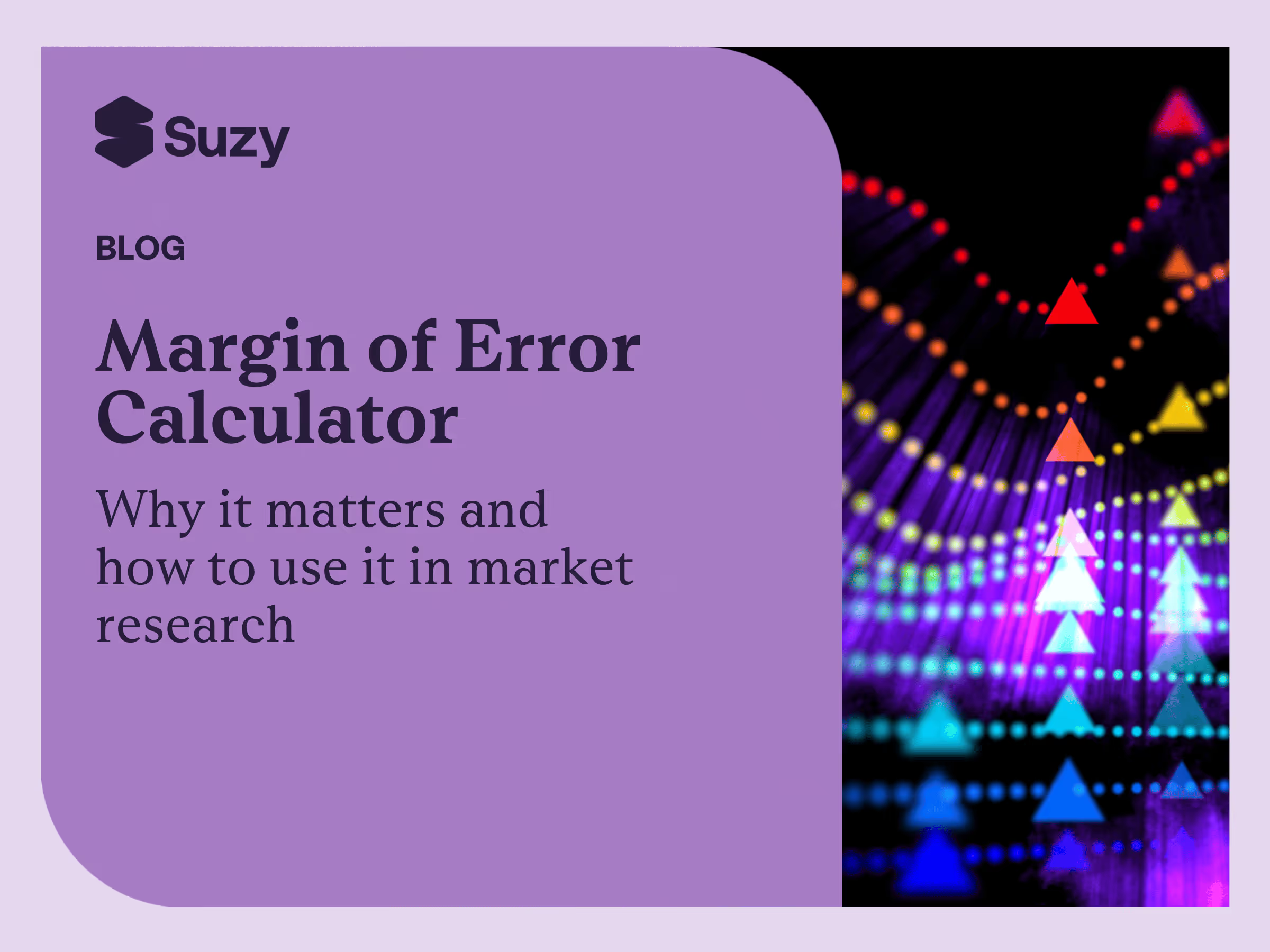Effective survey research results in data that accurately reflects perceptions, intentions, and behaviors of the target population. Margin of error (MOE) provides a measurement of that accuracy. Specifically, this figure helps quantify how confident you can be that your sample-based results reflect the broader population.
Whether you’re testing a new concept, measuring brand health, or validating messaging, the MOE provides a sound statistical foundation to empower data-driven decision making.
This free MOE Calculator allows you to enter your total population, sample size, and desired confidence level to instantly compute your MOE. No spreadsheets or statistical coding required.
Table of contents
- Why margin of error matters
- How the calculator works
- When is a margin of error "good"?
- Putting MOE in context
- Supporting smarter research decisions
- Try the margin of error calculator
Why margin of error matters
Survey-based research rarely includes the entire population. Instead, researchers collect data from a sample – a smaller, representative group – and use it to estimate how the full population might respond.
The margin of error indicates how close that estimate is likely to be to the true value. It’s the buffer around your data that says, “We’re confident the real answer is somewhere in this range.”
For example, if 60% of respondents prefer a product and the margin of error is ±3% at a predetermined error rate of 5%, you can interpret the result as:
“We’re 95% confident that between 57% and 63% of the entire population would prefer this product.”
This is crucial when:
- Deciding if two concepts are statistically different
- Understanding if a result is close to neutral or polarizing
- Comparing results across waves or segments
- Communicating data with stakeholders who need to understand risk and reliability
How the calculator works
To use the calculator, simply input:
- Population size – the total number of people you’re targeting. In consumer insights, this number is typically large, since the target market captures a sizable number of potential consumers. The total number can get smaller when your population of interest is inherently small - e.g., interventional radiologists, public elementary school art teachers, and so on.
- Sample size – the number of completed survey responses.
- Confidence level – how confident you want to be. Across many industries, 95% has become the normative level of confidence.
The calculator applies the industry-standard formula for finite population correction, using a conservative 50% proportion (p = 0.5) to give the maximum expected margin of error.
The result is a clean, interpretable percentage – helping you understand how precise your data is before you move to action.
When is a margin of error "good"?
There’s no universal “perfect” margin of error. That said:
- ±2–3% is considered high-precision and is standard for national tracking or political polling.
- ±4–6% is acceptable for most brand and concept testing.
- ±7% or higher may be acceptable for directional insights, especially with niche or hard-to-reach audiences.
Ultimately, the margin of error should align with your research objectives and the level of certainty required for decision-making.
Putting MOE in context
It’s important to remember that the margin of error only accounts for variation due to randomness within sampling. Other sources of error – like biased or poorly written survey questions, poor sampling methods, or low response rates – are not captured in this calculation.
That’s why researchers often pair MOE analysis with:
- Confidence intervals (your estimate ± the MOE)
- Statistical significance testing
- Weighting adjustments
Supporting smarter research decisions
Suzy offers end-to-end support for researchers—from fast survey design to advanced analytics—so teams can spend less time validating data and more time driving impact.
Try the margin of error calculator
Use the calculator below to determine the margin of error for your next survey project.
.webp)







